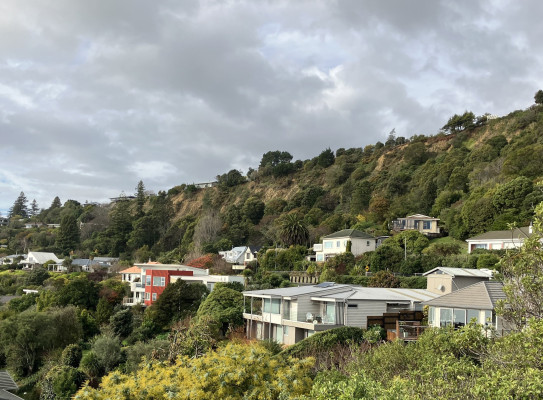GNS geologists study Tāhunanui slump to model impacts of complex slopes across NZ

Engineering Geologists from GNS Science, BECA and Tonkin + Taylor are this week continuing to collate data for one of New Zealand’s largest urban landslide, the Tāhunanui slump in Nelson, to create a 3D model of this slow-moving landslide to better understand similar landslides across the country.
GNS Engineering Geologist Dr Chris Massey said the research, funded by EQC Toka Tū Ake and MBIE Hazard and Risk Management SSIF, is a valuable opportunity to understand how earthquakes and rainfall interact and compound to trigger or reactivate slope movement from regional scale, to the scale of individual large landslides.
“The Tāhunanui landslide has undergone a series of earthquake and rainfall-induced movement events over the years. Our research will examine how these events have affected the structure, material composition and strength of the slope at depth, so we can develop numerical physics-based modelling of this complex type of landslide,” Dr Massey said.
As one of New Zealand’s largest urban landslides, the slope provides an opportunity to study not only the geophysical forces driving land movement, but also how these types of landslides can affect surface infrastructure.
“Once we have a complete 3D model of the slope, we can calibrate it using historical movement data, and once calibrated we can use this information to develop forecasts of slope movement for future events, including their impacts."
We hope this can help inform important decisions that determine where and how we live, particularly considering a changing climate likely to exacerbate landslide hazards.
This week’s field research is part of a larger project to identify and forecast earthquake- and rainfall-induced movement patterns of large, populated landslides. This research will not look at individual properties but is designed to provide an area-wide overview of the region and this large landslide.
Principal Advisor Risk Reduction and EQC's Champion of Land Use Planning Dr Wendy Saunders hopes the new modelling will help empower communities to make decisions that are right for them.
We are investing in building a solid evidence-base through which we can empower decision-makers, like councils and homeowners, to move towards an uncertain future with more confidence about their risks and what they can do to avoid, mitigate or reduce them.
“With a warming climate, we can expect to see more rainfall induced landslides all across the country, which are already a major hazard in New Zealand. This research is part of a suite of investments EQC is making into understanding why, where and how landslides happen to help people better prepare and reduce the impact from future events.”
Nelson Mayor Nick Smith welcomed the continued research into the complex Tāhunanui Slump.
“Nelson has a unique and difficult challenge in how we manage the Tāhunanui Slump, the largest urban landslide in New Zealand on which there are about 120 properties,” Mayor Nick said.
“We secured $300,000 of Government support last year to enable sophisticated monitoring over the next decade. This additional investment by EQC to support GNS Science and our top engineering companies will help us better manage this risk into the future. This is of great benefit to the residents and Nelson but also to the science of managing landslides nationally and internationally,” Mayor Nick said.

